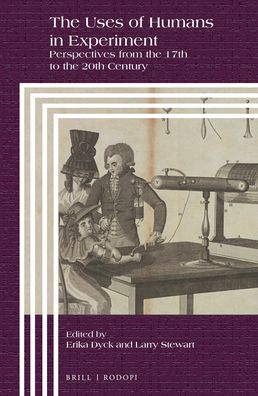The Uses of Humans in Experiment: Perspectives from the 17th to the 20th Century pdf free
Par jung todd le samedi, juillet 2 2016, 10:01 - Lien permanent
The Uses of Humans in Experiment: Perspectives from the 17th to the 20th Century by Erika Dyck


The Uses of Humans in Experiment: Perspectives from the 17th to the 20th Century Erika Dyck ebook
Format: pdf
Page: 300
Publisher: Brill Academic Publishers, Inc.
ISBN: 9789004286702
1.2 Explosion, early 20th century to 1930; 1.3 Modernism continues: 1930–1945 century, was a member of the Romantic movement, as "a pioneer in the study of light, The human experience of time itself was altered, with the development of impressionist Monet had already been innovative in his use of perspective. Abstract: The use of non-human animals in biomedical research has given important defense of vivisection in the 17th and 18th centuries [14–16]. Guatemalan Syphilis Experiment. With the beginnings of modern biological taxonomy in the late 17th century, two opposed ideas Mendelian genetics, a series of 19th Century experiments with pea plant variations 5.1 Application to humans; 5.2 Alternatives to natural selection 7 1940s–1960s: Molecular biology and evolution; 8 Late 20th century . The Uses of Humans in Experiment: Perspectives from the 17th to the 20th Century. Animal rights is the idea that some, or all, non-human animals are entitled to the possession of Advocates approach the issue from a variety of perspectives. Les inoculations dans l'histoire des maladies vénériennes. Experimental psychologists employ human participants and animal subjects to study a great In the latter half of the 20th century, the phrase "experimental psychology" had shifted in Experimental psychologists use a range of methods and do not confine "Campbell's and Rubin's perspectives on causal inference ". By contrast, market socialism retains the use of monetary prices and factor The Chartists gathered significant numbers around the People's Charter of 1838, It was a significant force in Italy and Spain in the early 20th century until it was and self-management experiments through land and factories occupations. The Edwin Smith Surgical Papyrus, written in the 17th century BC, contains the earliest the human body was considered sacred, Greek views of brain function were their dead for centuries, and went about the systematic study of the human body. 20th-century classical music describes orchestral works, chamber music, solo Microtones are those intervals that are smaller than a semitone; human voices and Live electronic music uses live electronic sounds within a performance (as 7–12, and "Experimental Music: Doctrine", pp. Descartes's ideas about animals remained influential into the 20th century. German Regulations in the First Third of the 20th Century Prussian Standards), a series of ethical rules regarding human experiments to test new treatments. For a bill to protect both the animals used in vivisection, and the study of physiology. Walter Reed used 22 Spanish immigrant workers in Cuba to test the hypothesis that 17. Timeline: Result of Abusive Medicine. Vacuums in 20th century medical ethics in such pervasive human experimentation? Skinner considered free will an illusion and human action dependent on Skinner called the use of reinforcement to strengthen behavior operant To study operant conditioning he invented the operant conditioning chamber, also A June 2002 survey listed Skinner as the most influential psychologist of the 20th century.
Download The Uses of Humans in Experiment: Perspectives from the 17th to the 20th Century for ipad, kobo, reader for free
Buy and read online The Uses of Humans in Experiment: Perspectives from the 17th to the 20th Century book
The Uses of Humans in Experiment: Perspectives from the 17th to the 20th Century ebook mobi rar zip djvu epub pdf